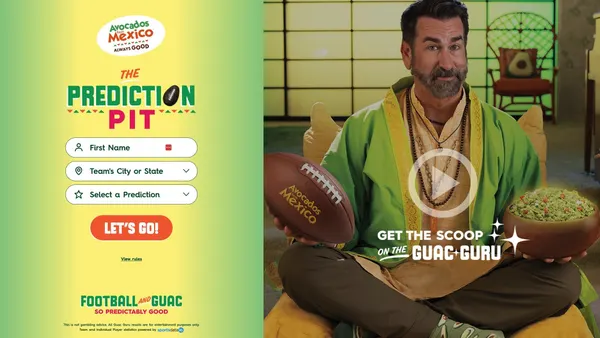Urban Outfitters recently leveraged geographical information to better understand users' behaviors and strategically use different messaging channels like push notifications, email and in-app messages, resulting in a 146% increase in revenue and 75% gain in conversions.
The retailer, working with partners Appboy and PlaceIQ, used mobile location data to gain insights into its customers, underscoring how mobile devices have changed the value and targeting ability around location marketing by allowing marketers to drill down into attributes for specific devices at specific locations, not just broad demographics and geographic areas.
For brands, using location data to enhance messaging can improve its relevancy, an important way to stand out and get noticed as the volume of branded messages on phones grows. Urban Outfitters further boosted its strategy with emojis, deep linking, message testing and conversion tracking.
"Our goal is to provide better experiences for our audience in this competitive landscape," said Andrew Rauch, Senior Director of Global Digital Marketing at Urban Outfitters, adding that campaign location data improved communication with the targeted audience.
Urban Outfitters goes local
The goal of Urban Outfitters' effort was to reach a certain demographic with a cocktail dress promotional campaign, according to Marissa Aydlett, VP of Marketing at Appboy. Specifically, the push wanted to win over women who frequented bars and nightlife venues across the U.S.
In the campaign, Urban Outfitters was able to take advantage of the strengths of push notifications, email and in-app messages to balance the messaging's urgency and content richness.
"The tactics Urban Outfitters used in this campaign represent best practices of lifecycle marketing," Aydlett told Marketing Dive, highlighting personalization, creative messaging, ease-of-use (through deep linking) and experimentation plus analysis.
Within the campaign, Urban Outfitters took advantage of five specific tactics:
- Dynamic audience filters. To further target its outreach, Urban Outfitters used dynamic audience filters — based on real-world location information and other data — to deliver messages based on visitation and behavior outside the app. For example, push notifications were used to promote party dresses exclusively to female audiences who frequent bars and nightlife locations.
- Emoji messaging. To make its messaging more eye-catching and engaging to the demographics targeted by the campaign, Urban Outfitters included emojis in its push notifications to heighten the fun, light-hearted tone. Appboy recently found that open rates for iOS and Android push notifications containing emojis have increased by 210% and 1,063%, respectively, year-over-year.
- Deep linking. To provide users with a smoother experience and increase the chances that messaging led to conversions, Urban Outfitters took advantage of mobile deep linking to send users right to the relevant page within the app when they tapped the message.
- Conversion events. To ensure accurate monitoring of the impact of promotional campaigns, Urban Outfitters used Appboy's Conversion Events feature to track when the push notifications sent as part of this outreach resulted in a purchase.
- Message testing. Urban Outfitters took advantage of message testing to evaluate separate versions of the campaign — one sent to the targeted PlaceIQ Audience, and one sent to female users who had previously expressed interest in dresses.
Tangible results
These tactics proved to be successful for the retailer. Along with the 146% lift in revenue, the campaign also resulted in a 75% increase in conversions.
Beyond the numbers, Urban Outfitters also gained insights that improved its messaging targeting for individual recipients within the campaign.
While marketing and advertising has always had a location-based element such as TV spots dedicated to certain markets and regions and direct mail campaigns that are tailored for the demographics around specific ZIP codes, the growth in mobile there’s an entire new tactic based around mobile moments, or those points during the day when a marketers can provide value to targeted customers who are using their phones.
Recent research from the BIA/Kelsey Industry Watch report forecasts that U.S. mobile ad spending overall will grow from $33 billion in 2016 to $72 billion by 2021. Just looking at the location-based mobile ads aspect of the forecast, that spending is expected to rise from $12.4 billion in 2016 to $32.4 billion in 2021.
What makes local marketing so potent?
"Whether a brand has 10 or 10,000 locations, at the end of the day, everything is local," Nick Neels, head of local search at Location3, previously told Marketing Dive. "All conversions come from a locality or specific geo-market. Even brands without physical locations should focus on hyper-local efforts."
The ability to leverage location data to improve messaging for campaigns is a strategy marketers looking to reach mobile consumers should consider.
Using location and customer activity data helps marketers avoid what Bill Magnuson, CEO and co-founder of Appboy, called "marketing faux pas," along with making the outreach more connected to the customer and earning the brand more respect.
"One-size-fits-all approaches (to messaging) don’t work when you’re trying to enrich relationships," said Magnuson. "If someone interrupts your day to send a marketing message, it needs to deliver value. An impersonal push notification is like a telemarketer calling during dinner. No one likes it."










